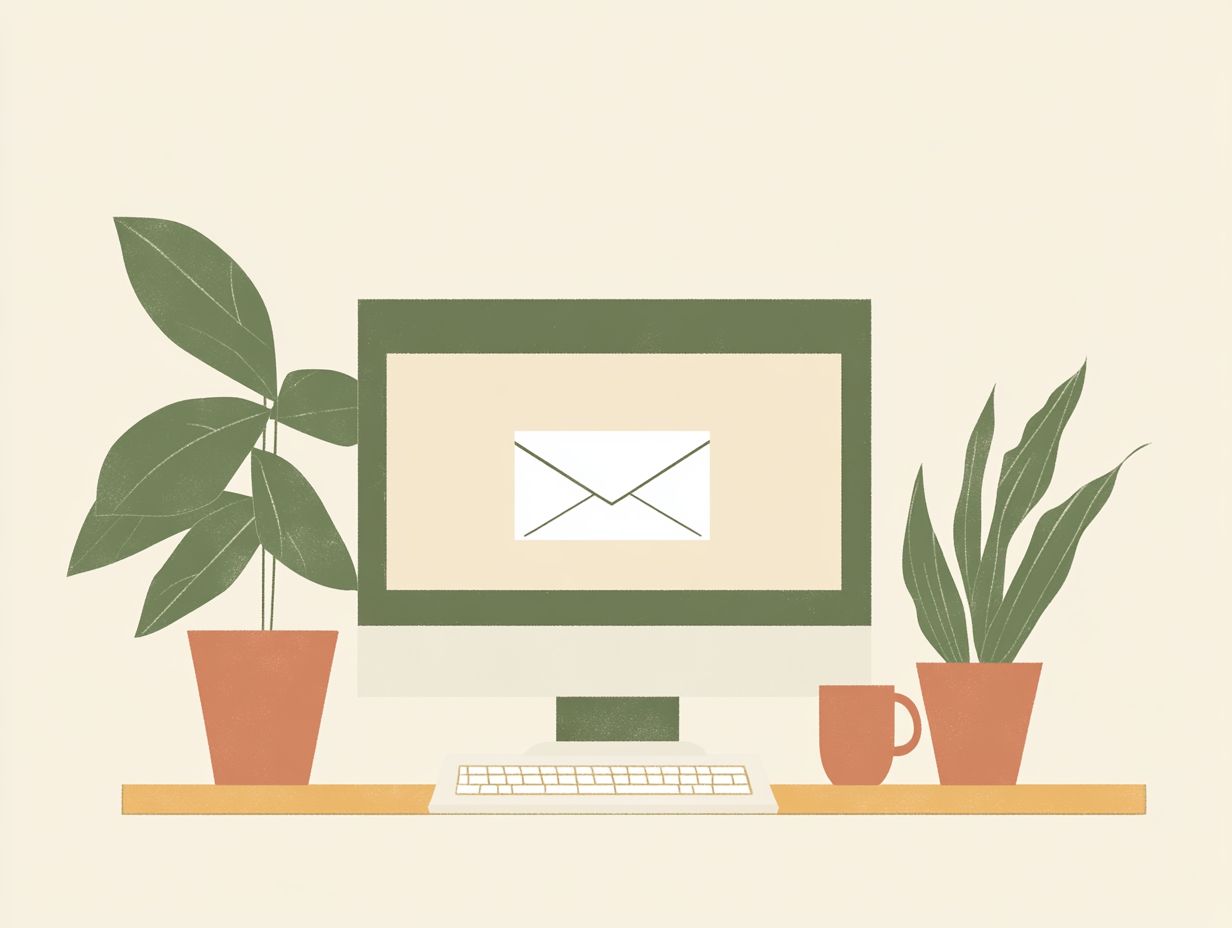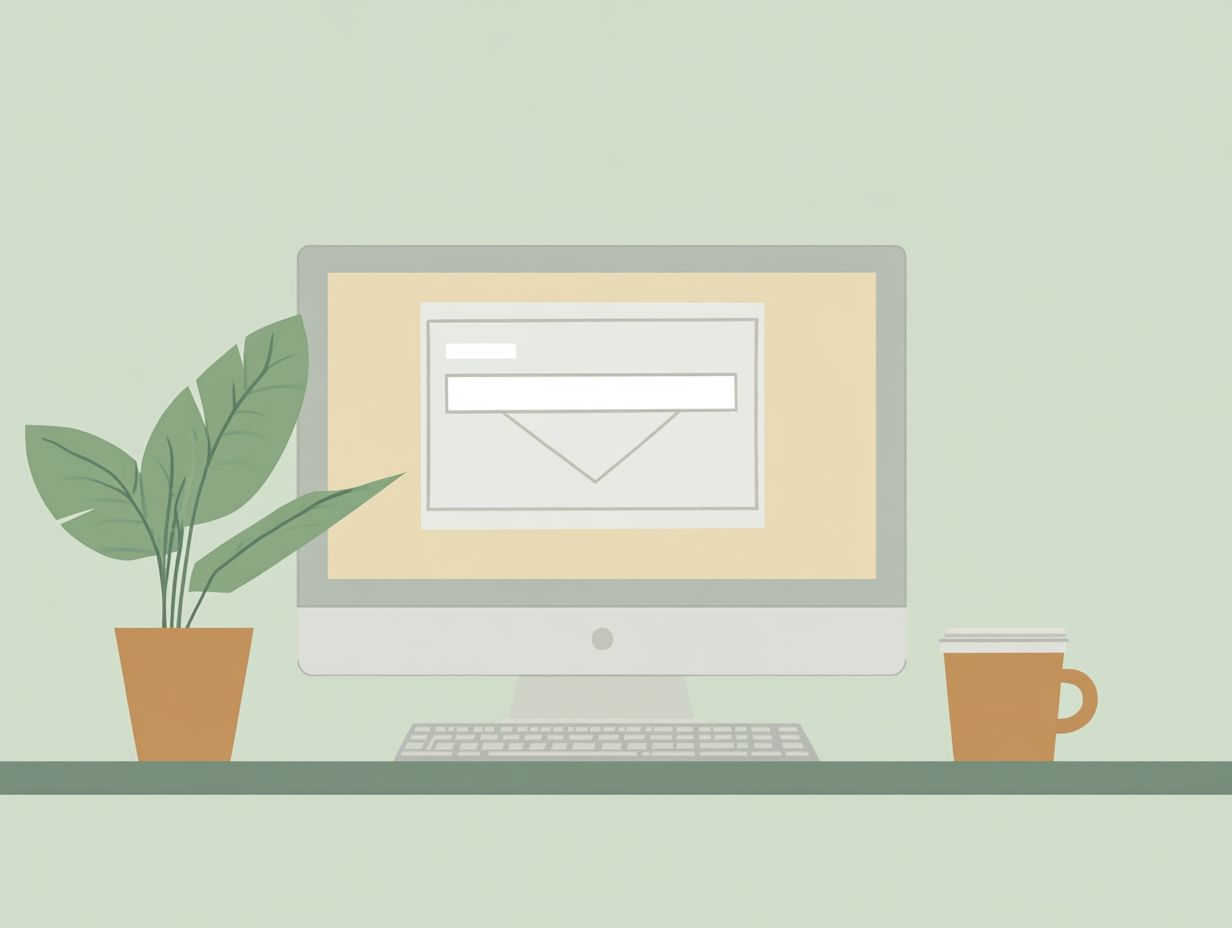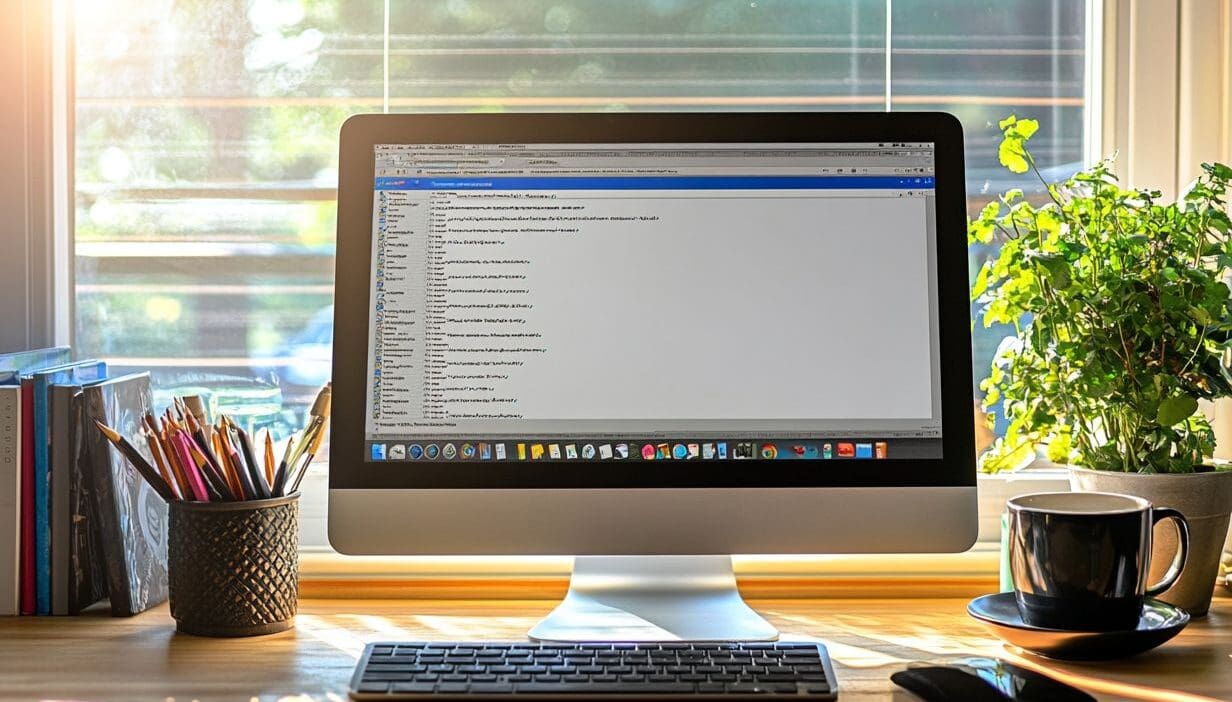In today’s fast-paced digital environment, managing email can often become a daunting task, especially for remote workers. This is where the concept of **Inbox Zero** comes into play—a transformative approach that offers not only a streamlined inbox but also enhanced **productivity** and **mental clarity** with the help of effective email management. This article will delve into the **definition of Inbox Zero**, its various benefits, and a comprehensive step-by-step process for achieving and maintaining this **email utopia**, while discussing how to **deal with it** effectively. Additionally, we will present **alternative methods** for managing emails effectively, including how to **unsubscribe from emails** that are no longer relevant. Prepare to reclaim your **time** and **peace of mind** as we begin this exploration.
Key Takeaways:
What is Inbox Zero?

Inbox Zero is a productivity methodology and a state of mind established by Merlin Mann, designed to reduce clutter and effectively manage emails. This approach seeks to achieve a clean inbox where every email is addressed, either through responding, archiving, deleting, or scheduling for later consideration.
By adopting the Inbox Zero method, individuals can alleviate email anxiety, streamline their email management processes, and enhance overall productivity, as suggested by **productivity expert** David Allen. For context, TechTarget provides a comprehensive overview of the Inbox Zero approach, detailing its principles and benefits for effective email management.
The primary objective is to minimize the mental drain and stress associated with an overloaded inbox, thereby enabling users to concentrate on critical matters and essential tasks.
Defining the Concept
Inbox Zero isn’t just about achieving a clear inbox; it’s a comprehensive **task management system**.
Defining Inbox Zero requires an understanding of it as a systematic approach to email management that emphasizes efficiency and clarity in handling emails. This methodology encourages individuals to regularly process their inboxes, utilizing task managers to track important tasks while minimizing the mental burden associated with a cluttered inbox.
By adopting this approach, individuals can significantly enhance their email experience, leading to improved productivity and reduced stress levels. The fundamental principle of Inbox Zero is not solely to achieve an empty inbox but to establish a streamlined process that facilitates prompt decision-making regarding emails. This may involve:
- Sorting messages into designated folders
- Delegating tasks
- Deleting unnecessary emails
Moreover, Inbox Zero promotes a shift in mindset, enabling users to perceive their inbox as a functional tool rather than a source of anxiety, **reducing distractions** and improving focus.
As a result, those who implement Inbox Zero typically find themselves better equipped to manage daily responsibilities, allowing for greater focus on primary tasks without the distraction of unresolved messages.
The Benefits of Inbox Zero

Implementing the Inbox Zero methodology can yield substantial benefits, including increased productivity and enhanced mental clarity. By systematically processing emails and removing unnecessary clutter, individuals are able to concentrate on essential tasks, make prompt decisions, and minimize the distractions associated with constant email notifications.
As advised by productivity experts, maintaining a clear inbox can significantly reduce stress levels and improve overall workplace communications, thereby facilitating a more organized workflow. This is supported by a study on ResearchGate that explores the correlation between email use, stress, and employee job satisfaction.
Improved Productivity and Mental Clarity
Implementing Inbox Zero can also help reduce **energy drain** caused by constant email notifications.
Achieving Inbox Zero offers a significant advantage in enhancing productivity and mental clarity. By eliminating unnecessary emails, individuals can concentrate on priority tasks, make timely decisions, and mitigate the mental fatigue often associated with an overcrowded inbox.
This systematic approach to email management not only alleviates the stress typically associated with overflowing inboxes but also fosters a more organized workflow, **reducing stress levels** and **improving productivity**.
With fewer distractions, individuals are better positioned to prioritize their daily responsibilities, allowing for deeper engagement in meaningful work.
The anxiety related to email management is substantially reduced, as the knowledge that every communication has been addressed provides a sense of peace, echoing the insights of **Andrew Mellen**.
By cultivating this environment of clarity, teams are better equipped to collaborate effectively, ensuring prompt responses to urgent matters, which enhances overall workplace harmony.
Therefore, adopting the Inbox Zero methodology serves not only as an effective strategy but also as a powerful tool for creating a proactive and focused professional environment.
How to Achieve Inbox Zero

Achieving Inbox Zero necessitates a systematic approach to email management, emphasizing the efficient triaging of messages and the decisive handling of emails, using tools like Todoist or Asana. This process involves categorizing emails according to urgency, importance, and required actions, ensuring that each message is addressed in a timely manner.
It is advisable to utilize a task manager to monitor important tasks while developing the ability to make prompt decisions regarding whether to respond, archive, delete, or set reminders for emails. According to HelpScout’s comprehensive guide on email management software, these strategies ultimately contribute to a more streamlined and organized inbox, offering insights into some of the best tools available.
Step-by-Step Process
To achieve Inbox Zero, it is advisable to adopt a systematic, step-by-step process that incorporates efficient triaging and decision-making strategies for managing your inbox. Begin by establishing specific times to check your email, thereby minimizing the impact of notifications and distractions throughout the day. This approach not only reduces interruptions but also promotes a focused work environment.
When emails are received, categorize them into: actionable items that require you to **send email**, those requiring a brief response, and those that can be archived immediately.
- Actionable items
- Those requiring a brief response
- Those that can be archived immediately
Employing the ‘two-minute rule’ is beneficial; if a task can be completed quickly, it is prudent to address it immediately, emphasizing the need to **make decisions fast**.
For tasks that require more time, schedule them into your calendar, allowing dedicated periods to manage each issue without overwhelming your daily agenda.
It is essential to regularly review your organizational system to ensure its continued effectiveness and to adjust your strategies as necessary to maintain control over your inbox. By consistently implementing these methods, the goal of achieving Inbox Zero will become more attainable and less time-consuming.
Maintaining Inbox Zero

Maintaining Inbox Zero is an ongoing process that necessitates consistent effort and effective strategies to achieve a clear inbox. This entails regularly reviewing email subscriptions, utilizing email clients to manage correspondence efficiently, and implementing practices such as archiving current emails, deleting unnecessary messages, and unsubscribing from promotional emails.
By cultivating sustainable habits, individuals can mitigate work overload and remain proactive in meeting their email management objectives.
Tips for Sustaining a Clear Inbox
**Inbox Zero** can be maintained by regularly reviewing and adapting your email handling processes.
To maintain a clear inbox and effectively achieve Inbox Zero, it is advisable to adopt specific strategies that facilitate regular management of emails and tasks. These strategies include:
- Archiving emails
- Creating a task list for follow-ups
- Consistently unsubscribing from unnecessary promotional emails
Designating specific times each day or week for email review can significantly enhance productivity and prevent the accumulation of unread messages, suggesting you **check email less** frequently.
Additionally, implementing filters and labels can improve organization, allowing for quick access to important conversations.
For individuals who receive a substantial volume of newsletters, utilizing subscription management services can help minimize clutter while still retaining access to relevant information.
By integrating these practices, individuals can transform their inbox into a more manageable space, resulting in reduced stress and improved efficiency.
Alternative Methods for Managing Email
Although the Inbox Zero method is widely recognized, several alternative strategies for email management can also enhance efficiency and alleviate email-related anxiety, reducing the **mental drain** associated with an overloaded inbox.
Approaches such as utilizing specialized email management tools like Superhuman, organizing work communications through platforms such as Slack and WhatsApp, or implementing a task list system can significantly streamline workflows.
These methods ensure that important tasks are prioritized while mitigating the cognitive burden associated with email overload.
Other Email Management Strategies
Additional email management strategies may involve utilizing task managers to track important tasks, establishing specific intervals for checking emails, and employing filters to effectively manage notifications and promotional content, thereby enhancing **time management**.
By incorporating a dedicated email client, individuals can significantly enhance their productivity, using tools like **Superhuman** or platforms like **Slack** and **WhatsApp** for **work communications**.
These clients frequently provide advanced features such as customizable organization options and integrated calendars, facilitating seamless scheduling.
Establishing rules for the automatic sorting of incoming emails into designated folders can assist in maintaining focus and prioritizing urgent correspondence. Utilizing reminders and task lists within these management tools can help ensure that critical responsibilities are not overlooked.
This comprehensive approach not only maintains organized inboxes but also fosters a more structured workflow, enabling individuals to address their obligations with clarity and efficiency, as discussed in **Google Tech Talk** by **Merlin Mann**.



